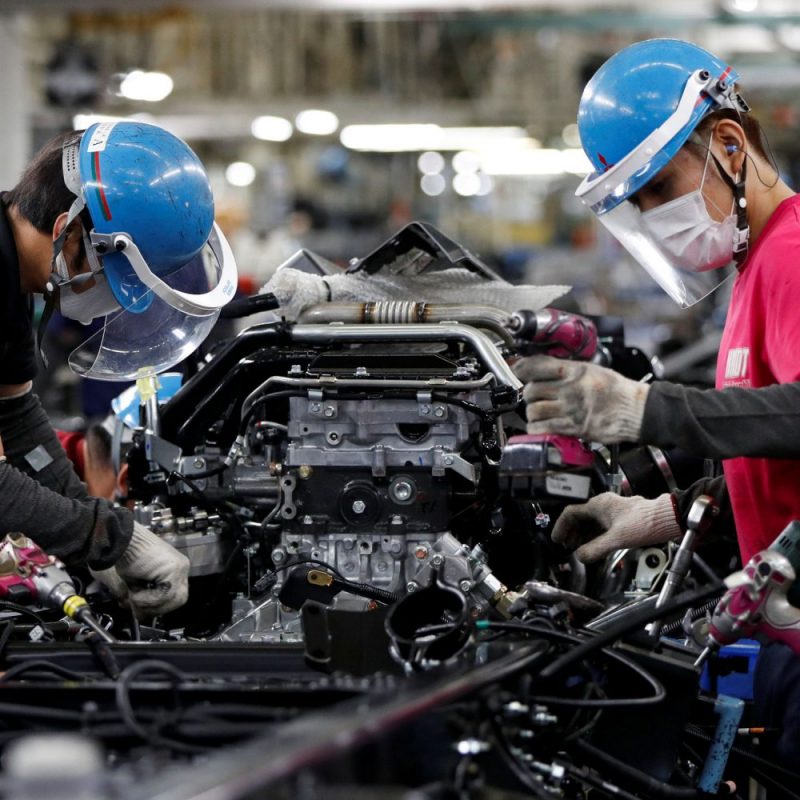Machinery production boosts industrial output as retail sales soar from low base
Japan’s industrial output rose in April, helped by higher machinery production, in a sign that economic recovery in China and the US was boosting demand.
However, the world’s third-largest economy is expected to grow in the current quarter at a much slower pace than previously thought after the government extended coronavirus emergency measures in Tokyo and other major areas.
“The weaker than expected rise in industrial production in April suggests the economy was subdued even before states of emergency were declared, supporting our view that the economy won’t have rebounded from its weak first quarter,” Tom Learmouth, Japan economist at Capital Economics, said.
Separate data on Monday showed retail sales, a key gauge of consumer spending, surged in April, thanks largely to favourable statistical base effects from a year earlier.
Ministry of Economy, Trade and Industry (METI) data released on Monday showed factory output grew 2.5% from the previous month.
Higher output of information and communication electronics equipment and production machinery contributed to the increase, according to the ministry, which added that motor vehicles, other transport equipment and plastics output declined.
SEMICONDUCTOR SHORTAGES
The rise in output was better than the previous month’s 1.7% gain, but much weaker than a 4.1% advance forecast in a Reuters poll of economists as car production fell largely due to semiconductor shortages.
Manufacturers surveyed by METI expected output to fall 1.7% in May, followed by a 5.0% rebound in June.
“Looking ahead, we expect industrial production to pick up gradually, reflecting progress around inventory adjustments,” Barclays analyst Kazuma Maeda said. “However, the pace of recovery could slow as pent-up demand fades.”
In April, retail sales soared 12% compared with the same month earlier, the government said, mainly due to statistical base effects.
However, compared with the previous month, retail sales fell 4.5% on a seasonally adjusted basis, as consumer sentiment struggled with the most recent measures to stem a halt in coronavirus infections.
The decline was driven by a 16.8% plunge in apparel sales and an 11.2% fall in motor vehicle sales.
“Due to the unusual volatility of services spending, the retail data haven’t been a great guide to overall consumption during the pandemic,” Learmouth said.
With reporting by Reuters
ALSO SEE:
Stay away from Japan, US urges on eve of Olympic Games
Japan manufacturers’ optimism hits two-year high on strong demand
























